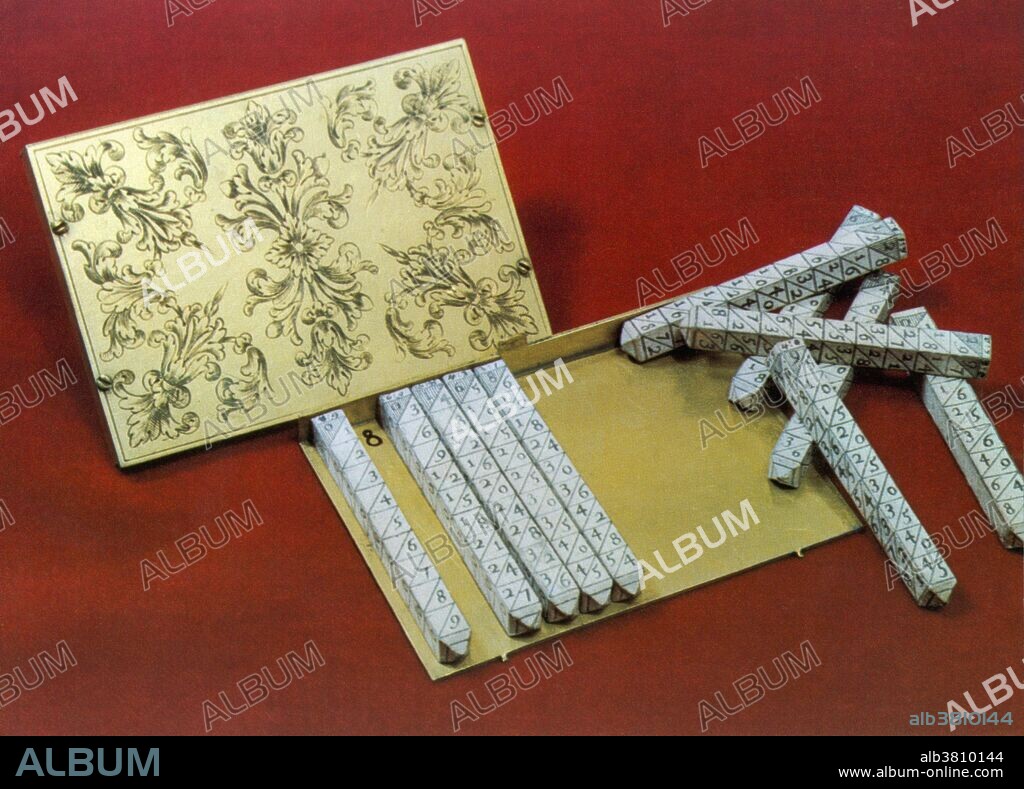alb3810144
Napier's Bones (Abacus)

|
Ajouter à une autre Lightbox |
|
Ajouter à une autre Lightbox |



Avez-vous déjà un compte? S'identifier
Vous n'avez pas de compte ? S'inscrire
Acheter cette image

Titre:
Napier's Bones (Abacus)
Légende:
Voir la traduction automatique
Napier's bones is a manually-operated calculating device created by John Napier for calculation of products and quotients of numbers. The user places Napier's rods inside the rim to conduct multiplication or division. The board's left edge is divided into 9 squares, holding the numbers 1 to 9. The Napier's rods consist of strips of wood, metal or heavy cardboard. Napier's bones are three-dimensional, square in cross section, with four different rods engraved on each one. A set of such bones might be enclosed in a convenient carrying case. A rod's surface comprises 9 squares, and each square, except for the top one, comprises two halves divided by a diagonal line. The first square of each rod holds a single digit, and the other squares hold this number's double, triple, quadruple, quintuple, and so on until the last square contains nine times the number in the top square. The digits of each product are written one to each side of the diagonal; numbers less than 10 occupy the lower triangle, with a zero in the top half. A set consists of 10 rods corresponding to digits 0 to 9. The rod 0, although it may look unnecessary, is needed for multipliers or multiplicands having 0 in them.
Crédit:
Album / Science Source / New York Public Library
Autorisations:
Modèle: Non - Propriété: Non
Questions sur les droits?
Questions sur les droits?
Taille de l'image:
3974 x 2858 px | 32.5 MB
Taille d'impression:
33.6 x 24.2 cm | 13.2 x 9.5 in (300 dpi)
Mots clés:
 Pinterest
Pinterest Twitter
Twitter Facebook
Facebook Copier le lien
Copier le lien Email
Email
